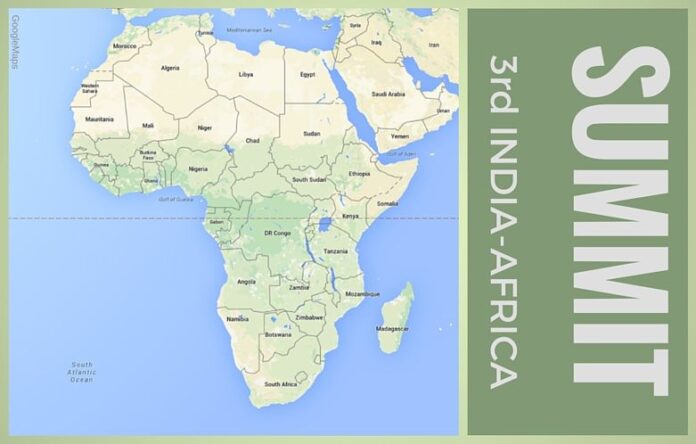
PG Staff
New Delhi, Oct 25
[dropcap color=”#008040″ boxed=”yes” boxed_radius=”8px” class=”” id=””]A[/dropcap]s the 3rd India Africa Forum Summit begins with preparatory meetings on Monday, IANS presents some key facts and figures about a continent that is not only one of the fastest growing regions of the world but one that is economically, culturally and linguistically diverse and is keen to engage more with India:
- Africa is 10 times the size of India
- Africa comprises 54 independent nations, the newest being South Sudan, which was carved out of Sudan
- Africa’s population is 1.1 billion (almost the same as India’s)
- Africa has a coastline of 26,000 km
- Africa has a relatively young population, with 65% below the age of 35. In many African states, more than half of the population is under the age of 25.
- Indian diaspora in Africa is about 2.7 million.
- The primary region of Africa is often called sub-Saharan Africa and excludes the mostly Islamic countries of North Africa like Egypt, Morocco, Algeria, Tunisia, Libya and Mauritania. Sub-Saharan Africa includes 42 nations on mainland Africa and six island nations.
- Arabic (in various dialects) is the most common language spoken in Africa with about 170 million speakers, primarily residing in North Africa. In the continent as a whole, there are over 2,000 recognised languages.
- At 171 million, Nigeria is the most populous country in Africa. Egypt comes second with over 85 million people.
- The largest country in Africa is Algeria with 967,490 square miles (2.5 million sq km). The smallest country is the island nation of Seychelles (175 sq miles or 453 sq km).
- There are at least 3,000 distinct ethnic groups (tribes) in Africa. Nigeria alone has more than 370 recognised tribes within its population.
- In 2013, the African Development Bank estimated that Africa’s middle class reached more than 300 million in 2008, amounting to a third of the continent’s population, or about the same size as its Chinese and Indian counterparts. Africa’s middle class is expected to grow to 1.1 billion (42% of the population) in 2060 (AfDB, 2011).
- Africa’s top 18 cities have a total spending power of $1.3 trillion.
- Consumer spending by the middle class reached an estimated quarter of Africa’s GDP of $3,359 billion in 2012. By 2030, this figure will likely reach $2.2 trillion, although Africa will still only account for about three% of worldwide consumption, according to a paper by the European Centre for Development and Policy Management.
- Currently, there are two competing narratives on Africa. One is a story of modernization, growth and global integration. It is the story of street traders with smartphones; new cities and skylines; factories supplying the likes of Cadburys, Unilever and Walmart; and multinational Western companies – from Google to General Electric. The second story is one of poor governance, conflict, poverty, marginalisation and underdevelopment.
- There is still a huge divide between the rich (five% in 2008) and poor (62%) in Africa. The middle class (33%) is not big enough. About 100,000 of the wealthiest Africans have a collective net worth amounting to 60% of the continent´s GDP, according to the AfDB, citing 2008 figures.
- Nigeria will leapfrog Egypt into second place behind South Africa, with Kenya in fourth place, in the New World Wealth’s projected 2030 rankings of African countries by dollar millionaires. Millionaires in Ghana will triple by 2030 with an advance of 144% in Angola. The number of high-net-worth individuals in Ethiopia, which grew the fastest over the past six years, will almost triple to 7,900 by 2030 amid a privatisation programme, according to the European Centre for Development and Policy Management.
Note:
1. Some content is used from IANS.
Latest posts by Author (see all)
- Pentagon cancels aid to Pakistan over record on militants - September 2, 2018
- The curious case of Tamil Nadu’s opposition to NEET - September 4, 2017
- If 2.6 Billion People Go To War: India vs. China - July 22, 2017







